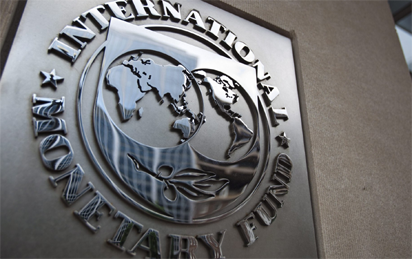The International Monetary Fund (IMF) has revised upward its 2023 growth projection for Nigeria’s economy to 3.2% from the earlier projected 3.1% growth rate published in its World Economic Outlook Update (WEO) in October last year.
The IMF made the latest forecast in its World Economic Outlook Update published on Tuesday.
It reported that the slight upward revision for Nigeria’s 2023 growth rate by 0.1% point reflected Nigeria’s rising growth in 2023 due to measures to address insecurity issues in the oil sector,
The IMF further clarified: “In sub-Saharan Africa, growth is projected to remain moderate at 3.8 per cent in 2023 amid prolonged fallout from the COVID-19 pandemic, although with a modest upward revision since October, before picking up to 4.1 per cent in 2024.
“The small upward revision for 2023 (0.1 percentage point) reflects Nigeria’s rising growth in 2023 due to measures to address insecurity issues in the oil sector. In South Africa, by contrast, after a COVID-19 reopening rebound in 2022, projected growth more than halves in 2023, to 1.2 per cent, reflecting weaker external demand, power shortages, and structural constraints”, the Fund added.
Similarly, the IMF also raised Sub-Sahara Africa’s (SSA’s) GDP growth to 3.8% in 2023 clarifying that while Nigeria is expected to grow by 3.2% in 2023 and later fall to 2.9% by 2024, South Africa is expected to grow by 1.2% in 2023 and 1.3% in 2023.
The report indicated that its Q4 2022 projections had earlier shown it expected Nigeria’s economy to grow by 3.1% in 2023 and 2.9% in 2024.
The Breton Woods development finance institution’s report further reflected that the IMF also revised the global growth outlook for 2023 upwards by 0.2 percentage points to 2.9% higher than predicted in the October 2022 World Economic Outlook (WEO) but below the historical (2000–19) average of 3.8 per cent.
The Fund stated: “Global growth is projected to fall from an estimated 3.4 per cent in 2022 to 2.9 per cent in 2023, then rise to 3.1 per cent in 2024. The forecast for 2023 is 0.2 percentage points higher than predicted in the October 2022 World Economic Outlook (WEO) but below the historical (2000–19) average of 3.8 per cent.
“The rise in central bank rates to fight inflation and Russia’s war in Ukraine continue to weigh on economic activity. The rapid spread of COVID-19 in China dampened growth in 2022, but the recent reopening has paved the way for a faster-than-expected recovery.
“Global inflation is expected to fall from 8.8 per cent in 2022 to 6.6 per cent in 2023 and 4.3 per cent in 2024, still above pre-pandemic (2017–19) levels of about 3.5 per cent”, the IMF added.






